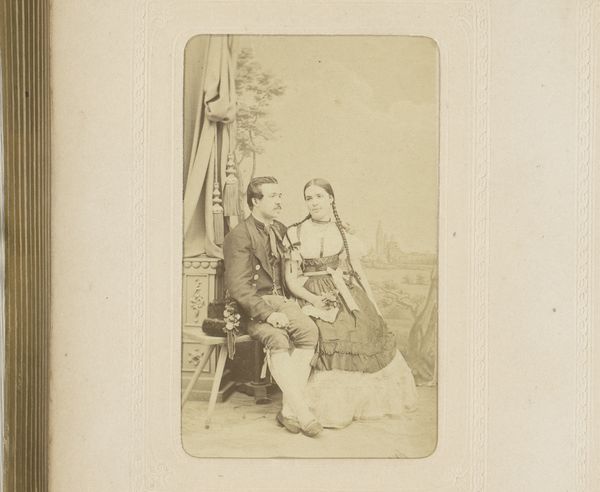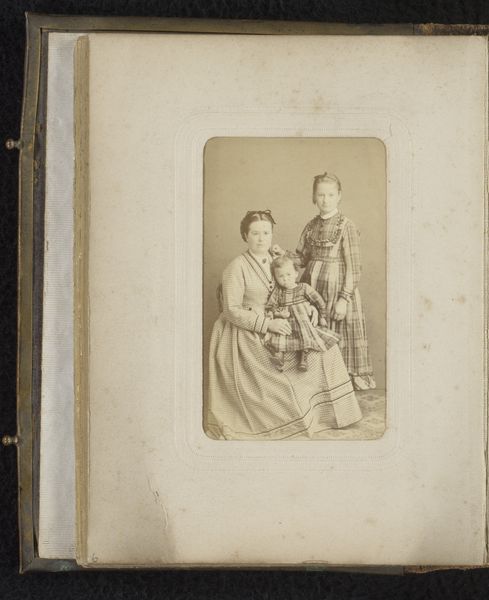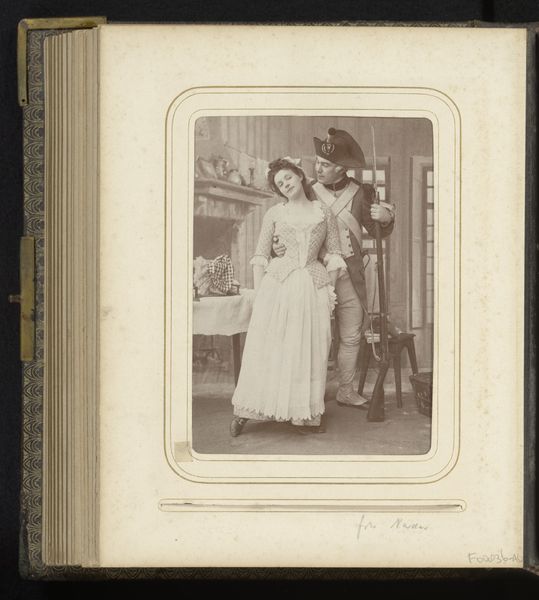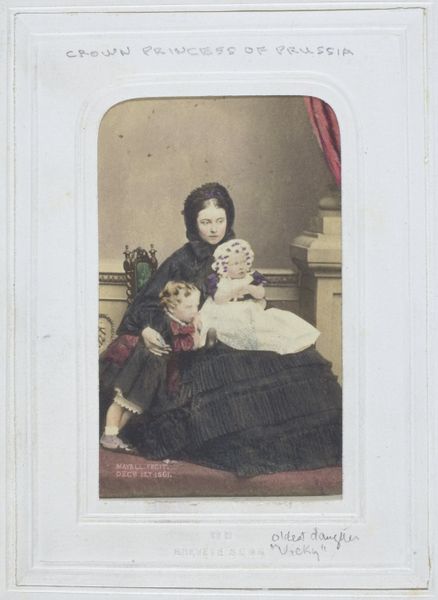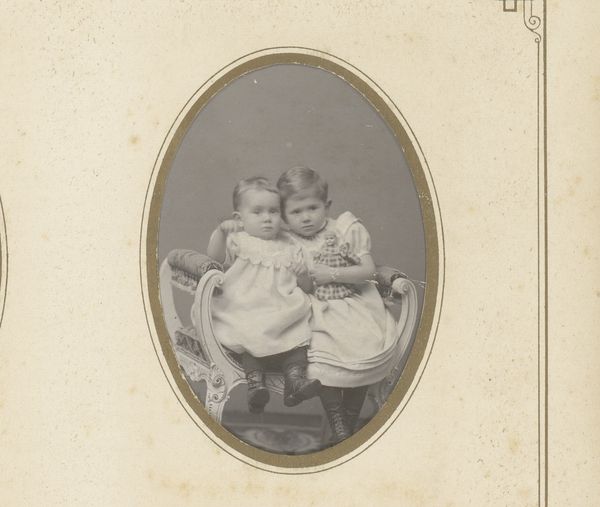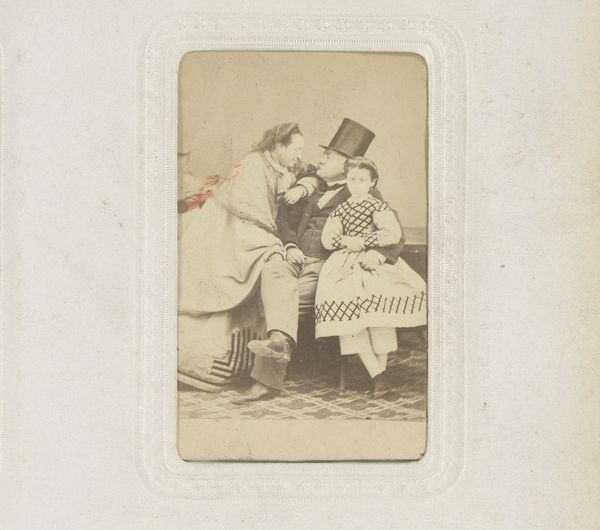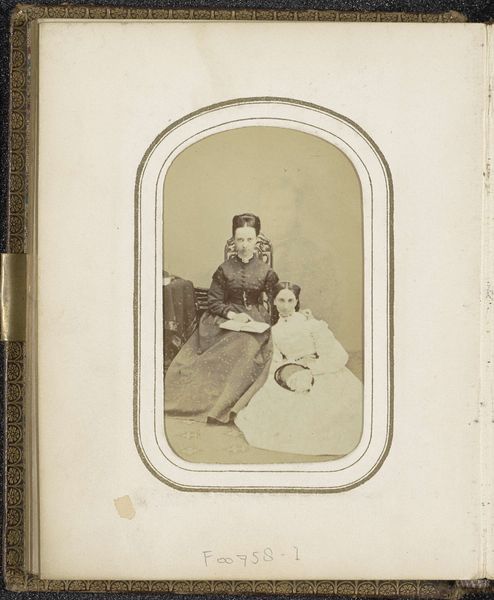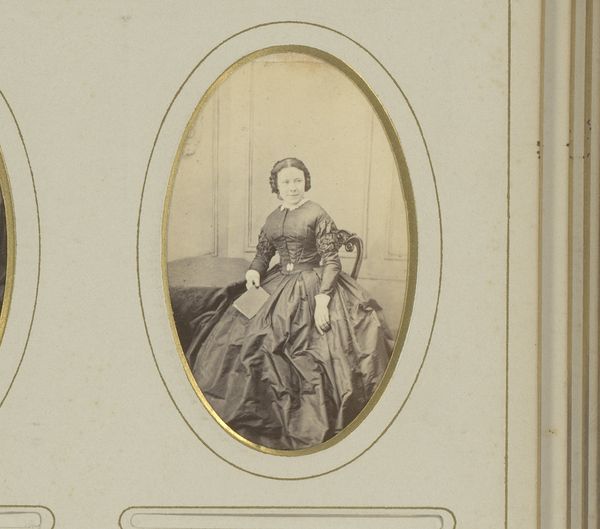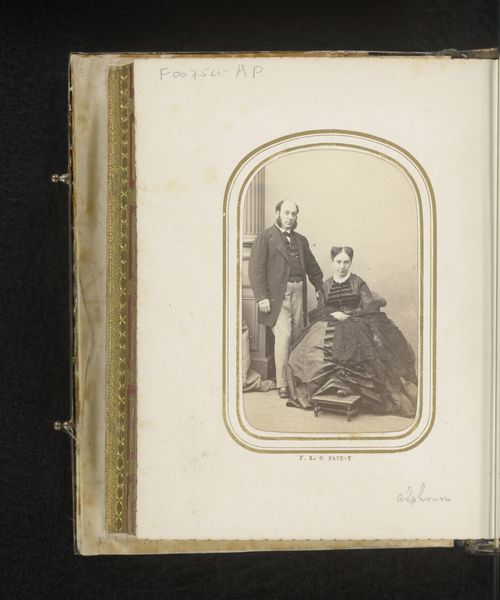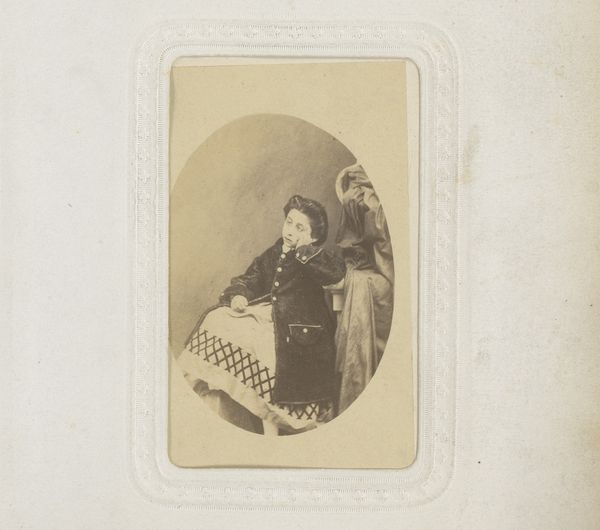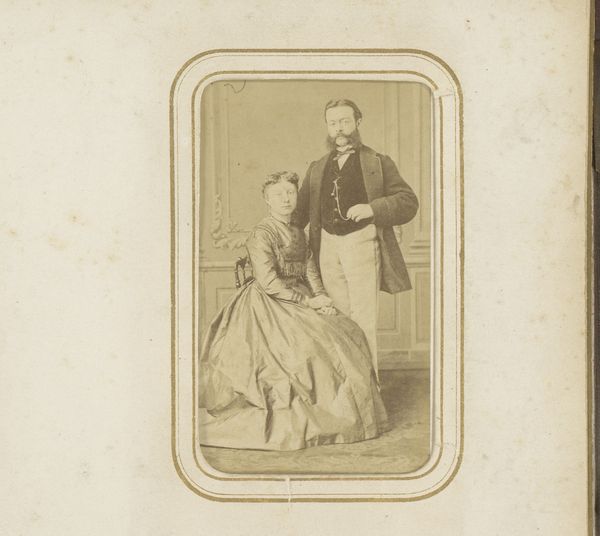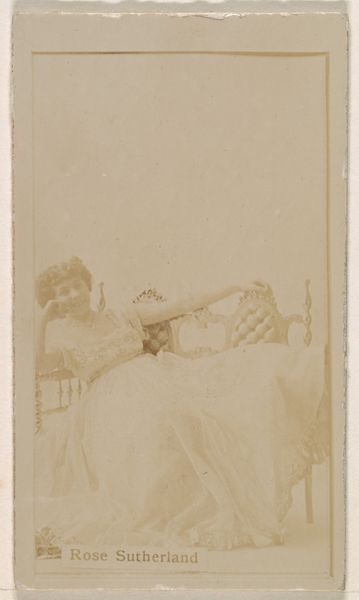
photography
#
photography
#
genre-painting
Dimensions: height 86 mm, width 52 mm
Copyright: Rijks Museum: Open Domain
Curator: This arresting photograph by Ramòn Buch y Buet, simply titled "Portret van twee vrouwen," and thought to have been created between 1866 and 1895, really evokes the spirit of its era through the detailed depiction of the two women. Editor: The first thing that strikes me is the somber mood. Despite the intricate lace and ornamentation, their faces seem etched with a weariness, almost a sense of resignation. There's an intensity to their stillness. Curator: Note how the light catches the textures of their dresses, contrasting the smoothness of the backdrop with the patterned floor. This play of textures gives depth and presence to the photographic print. Structurally, it’s about verticality meeting soft, curving edges, no? Editor: Absolutely, yet how does this aesthetic composition interact with societal constraints of the period? The women are positioned close together, almost touching, within what looks like an interior space that subtly acknowledges the limitations and expectations placed upon women during the late 19th century. Does the photograph attempt to liberate or reinforce prevailing ideas? Curator: I see your point, the domestic sphere as a signifier of their circumscribed existence, though look closer, the controlled gradation of light seems equally interested in surface and its very subtle variances. Doesn’t that point to the image’s formal ambitions? Editor: But we cannot detach the gaze from the sitter, and from there consider the sitter from their historical realities. Does it mean something, for instance, that these women are captured together? Could their relationship signify emotional solidarity, defiance or simple friendship amidst strict social roles? These visual texts become so much richer when seen through lenses of gender, identity, and resistance. Curator: A compelling argument. The convergence of such disparate ideas underscores the artwork's complexity. Perhaps its visual appeal belies layers of unspoken stories about their era. Editor: Perhaps, and in these complexities is precisely where we glimpse these women as whole, three-dimensional beings negotiating lived realities behind every hem, pleat, and gaze.
Comments
No comments
Be the first to comment and join the conversation on the ultimate creative platform.
